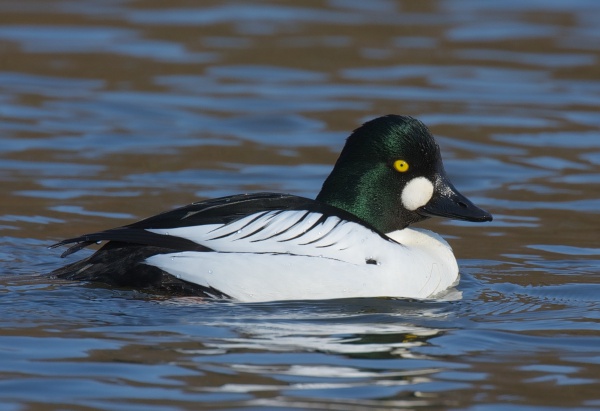Facts About Common goldeneye
The common goldeneye is a medium-sized sea duck belonging to the genus Bucephala and is closely related to Barrow's goldeneye. The name "Bucephala" derives from the Ancient Greek word "boukephalos" while the species name "clangere" is Latin in origin. These ducks are notable for their aggressive and territorial behavior and display quite elaborate courtship rituals.
Adult male common goldeneyes measure approximately 45–51 cm in length and weigh around 1,000 grams. Females are slightly smaller, measuring 40–50 cm and weighing about 800 grams. The species is named for its striking golden-yellow eyes. Males possess a dark head with a greenish sheen, a distinctive white patch below the eye, a dark back, and a white neck and belly. Females feature a brown head, mostly grey body, and orange-yellow legs and feet.
These ducks breed in the taiga and are commonly found in lakes and rivers within boreal forests across Canada, the northern United States, Scandinavia, the Baltic States, and northern Russia. They prefer nesting in cavities in large trees or nest boxes. The female incubates the eggs for 28 to 32 days, and the young are capable of flight at 55–65 days old. Common goldeneyes primarily feed on crustaceans, aquatic insects, and mollusks, with their diet varying seasonally.
The common goldeneye faces several conservation challenges, primarily due to habitat degradation from deforestation and pollution. However, they are protected under the Agreement on the Conservation of African-Eurasian Migratory Waterbirds (AEWA). Despite being hunted in North America, the common goldeneye population has shown some resilience to environmental changes, such as lake acidification.

 Italy
Italy